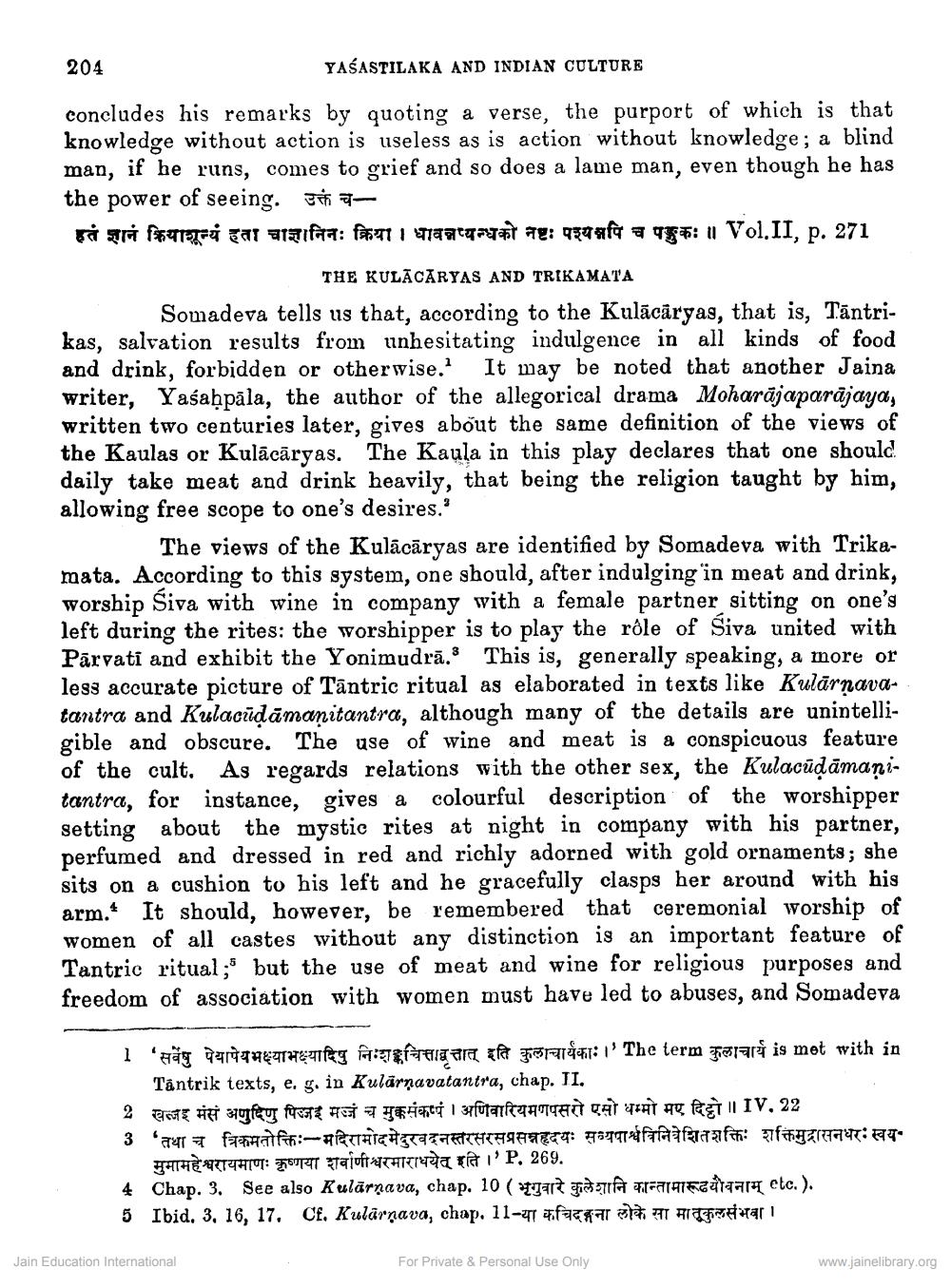________________
204
YAŠASTILAKA AND INDIAN CULTURE
concludes his remarks by quoting a verse, the purport of which is that knowledge without action is useless as is action without knowledge; a blind man, if he runs, comes to grief and so does a lame man, even though he has the power of seeing. उक्तं चi tri fari Taalafaa: fast I want y# 78: 999afo = 4F#: Vol.II, p. 271
THE KULĀCĀRYAS AND TRIKAMATA Somadeva tells us that, according to the Kulācāryas, that is, Tāntrikas, salvation results from unhesitating indulgence in all kinds of food and drink, forbidden or otherwise. It may be noted that another Jaina writer, Yasahpāla, the author of the allegorical drama Moharājaparājaya, written two centuries later, gives about the same definition of the views of the Kaulas or Kulācāryas. The Kaula in this play declares that one should daily take meat and drink heavily, that being the religion taught by him, allowing free scope to one's desires."
The views of the Kulācāryas are identified by Somadeva with Trikamata. According to this system, one should, after indulging in meat and drink, worship Siva with wine in company with a female partner sitting on one's left during the rites: the worshipper is to play the role of Siva united with Pārvati and exhibit the Yonimudrā.3 This is, generally speaking, a more or less accurate picture of Tântric ritual as elaborated in texts like Kulārnavatantra and Kulacüdāmanitantra, although many of the details are unintelligible and obscure. The use of wine and meat is a conspicuous feature of the cult. As regards relations with the other sex, the Kulacūdāmani. tantra, for instance, gives a colourful description of the worshipper setting about the mystic rites at night in company with his partner, perfumed and dressed in red and richly adorned with gold ornaments; she sits on a cushion to his left and he gracefully clasps her around with his arm. It should, however, be remembered that ceremonial worship of women of all castes without any distinction is an important feature of Tantric ritual;' but the use of meat and wine for religious purposes and freedom of association with women must have led to abuse
1 'Hang EZTETET TETE art fat 441:1 The term far is met with in
Tantrik texts, e. g. in Kulärnavatantra, chap. II. 2 T H Byfeu fost Teini 1 3 futanara CAT RESTLIV, 22 3 'तथा च त्रिकमतोक्तिः-मदिरामोदमेदुरवदनस्तरसरसप्रसन्नहृदयः सव्यपार्श्वविनिवेशितशक्तिः शक्तिमुद्रासनधरः स्वय
ATHEPATUHOT Frit Taloft ITHITVE e 'P. 269. 4 Chap. 3. See also Kulārnava, chap. 10 ( partit TIA FIFA19iaart etc.). 5 Ibid. 3, 16, 17. Cf. Kulárnava, chap. 11-a facrare IT C ar
Jain Education International
For Private & Personal Use Only
www.jainelibrary.org




